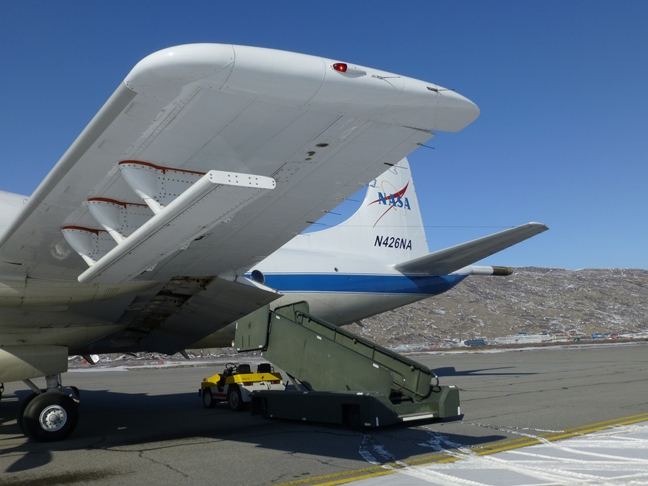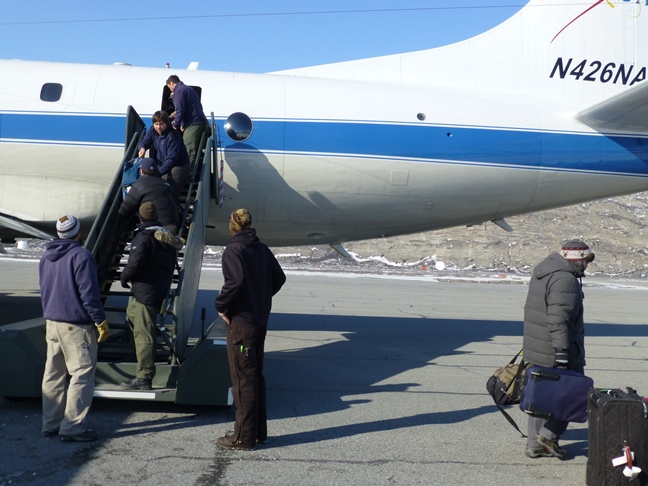By George Hale, IceBridge Science Outreach Coordinator, NASA Goddard Space Flight Center
IceBridge uses a variety of instruments to measure polar ice, but the equipment mounted to the P-3 is only part of what’s needed for a successful campaign. Ground-based GPS stations ensure instrument accuracy and archiving and processing data calls for all sorts of computer hardware. Also, the P-3 crew needs tools, supplies and spare parts to ensure the plane keeps running in top condition.

Some of this gear gets shipped ahead, but a sizeable portion travels on the P-3 itself both into the field and from base to base. Loading and unloading all of this cargo (and the team’s luggage) is a big job, but the team has practiced the job many times, allowing them to finish quickly.
To unload luggage the team formed a human chain, passing bags from the plane, down the stairs, and to the ground.

Gear cases and spare parts took a little more care. For this, airport ground crew brought over a conveyor truck to bring cases down to people waiting on the ground. From there team members carried cargo over to different areas on the ramp depending on which instrument it supported.

Aircraft parts and tools would stay at the airport, while luggage, instruments and computer gear would go to the Kangerlussuaq Science Support Center, where the IceBridge team will spend the next few weeks.

